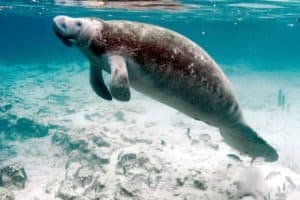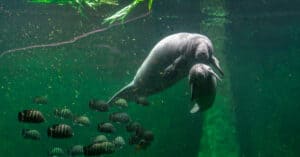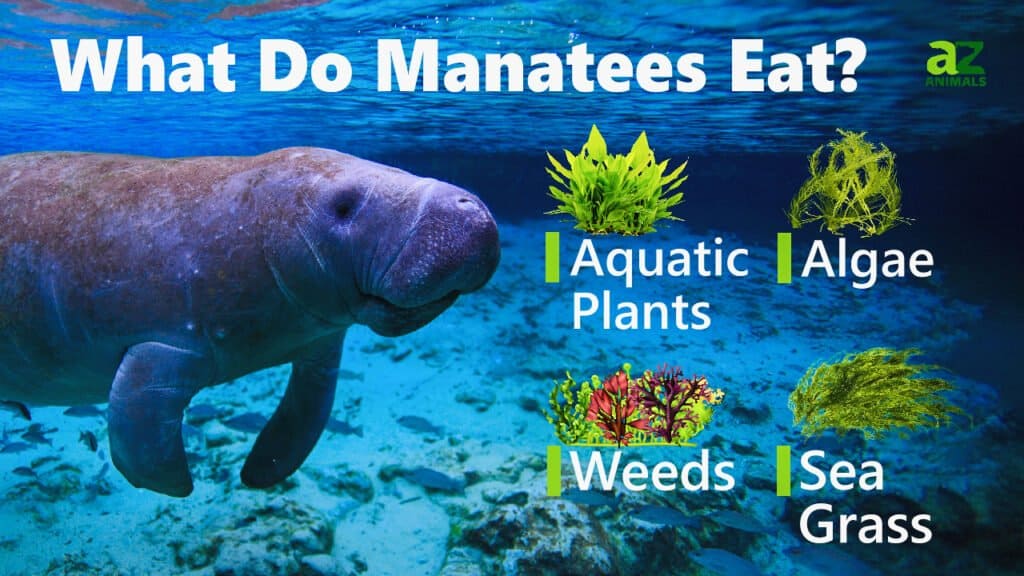
Manatees are gentle creatures comprising three species that live in warm coastal waters and river basins. Also called “sea cows”, manatees are known for spending much of their day grazing and curiously exploring the world around them. As one might imagine from the “sea cow” moniker, manatees are large, herbivorous creatures that regularly weigh 1,000 lbs or more. That fact will probably beg the question, what do manatees eat to maintain that weight?
We’ll show you what foods these dopey creatures love as well as how they find their meals.
What Do Manatees Like to Eat?
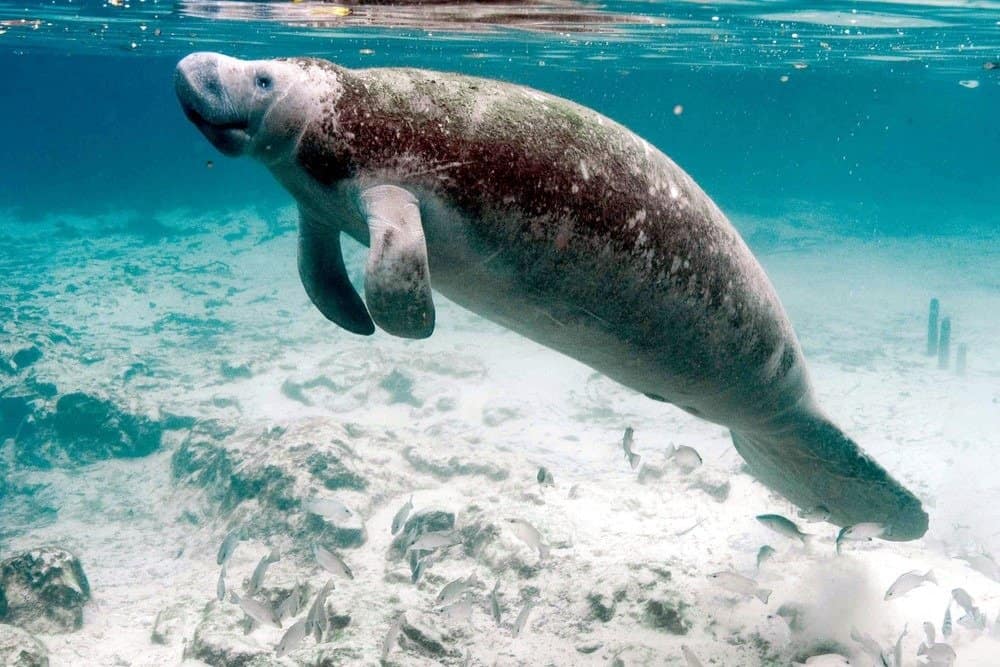
Manatees will look for food throughout their habitats.
©Ramos Keith, U.S. Fish and Wildlife Service / public domain – License
Manatees eat many types of freshwater and saltwater plants, and they are primarily herbivores. They will consume plants that are growing on the bottom of bodies of water, floating plants, vegetation near the shoreline, and emergent plants that are rooted in the water but extend above the waterline.
Manatees are not very particular about the foods they consume. With the amount of sustenance that they have to eat each day, they can’t afford to be!
To keep themselves well-fed, manatees often spend several hours of their day grazing in pursuit of food.
A List of the Foods Manatees Eat
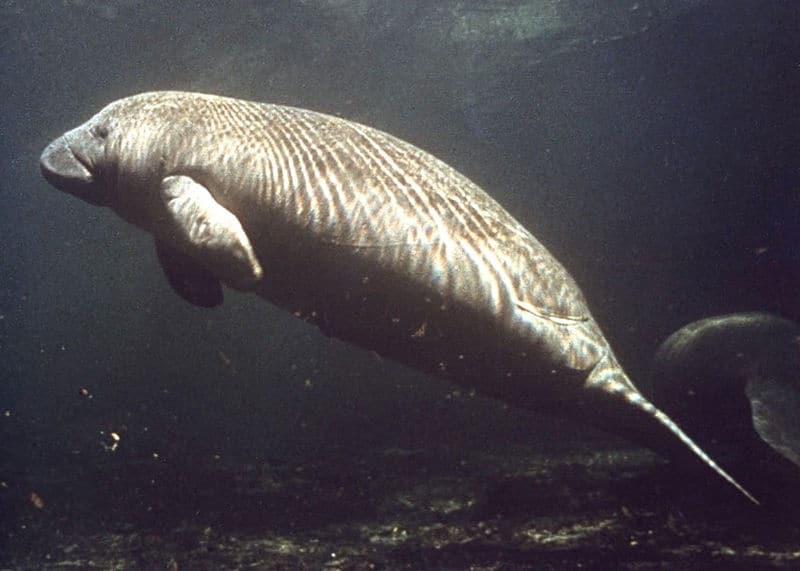
Manatees live in all sorts of waters
©NASA / public domain – License
With so much time spend grazing the warm coastal waters around the gulf coast, in the Amazon basin, or in West Africa, manatees happen across a lot of different types of food. Of course, that means some manatees eat foods that others do not simply because their species inhabit areas that are so far away from one another.
Creating an exhaustive list of the 60 or more foods they encounter and consume would be impractical, so we’re going to focus on the more common foods.
Some of the foods that manatees enjoy eating include:
- Water hyacinths
- Turtle grass
- Horsetail paspalum
- Manatee grass
- Alligator weed
- Widgeon grass
- Water celery
- Hydrilla
- Some forms of algae
These aquatic mammals have also been known to consume acorns and even eat fish in some cases, but it’s very rare.
Manatees prefer to eat all the aforementioned types of vegetation, and their bodies are made to digest it and derive nutrition.
We must also consider the eating habits of baby manatees. As mammals, calves nurse from the mother’s teats that are located under their pectoral flippers. The milk is mostly water but also contains fats and proteins. Interestingly, manatees nurse underwater.
After a few weeks of living, the manatees begin to eat plants on their own.
How Much Do Manatees Eat?
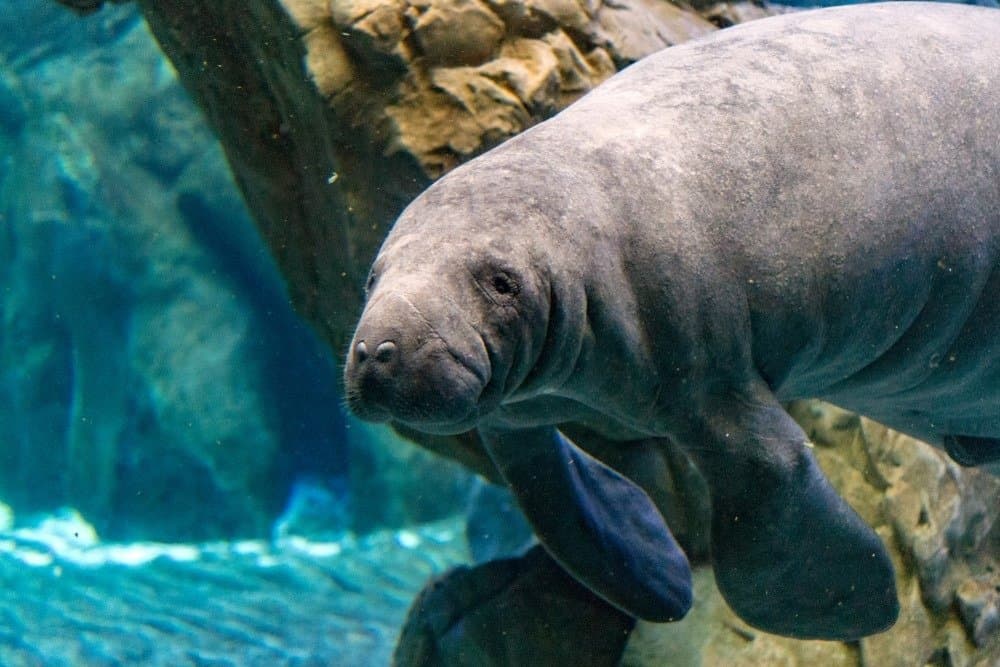
Manatees are large creatures and need to eat a lot.
©Andrea Izzotti/Shutterstock.com
Manatees are large creatures that regularly weigh between 800 pounds and 1000 pounds. They eat anywhere between 5% to 11% of their body weight daily, upwards of 100 pounds of vegetation.
They spend a lot of time looking for food and eating, but that comes with the territory of being a close relative to the elephant.
How Do Manatees Forage for Food?
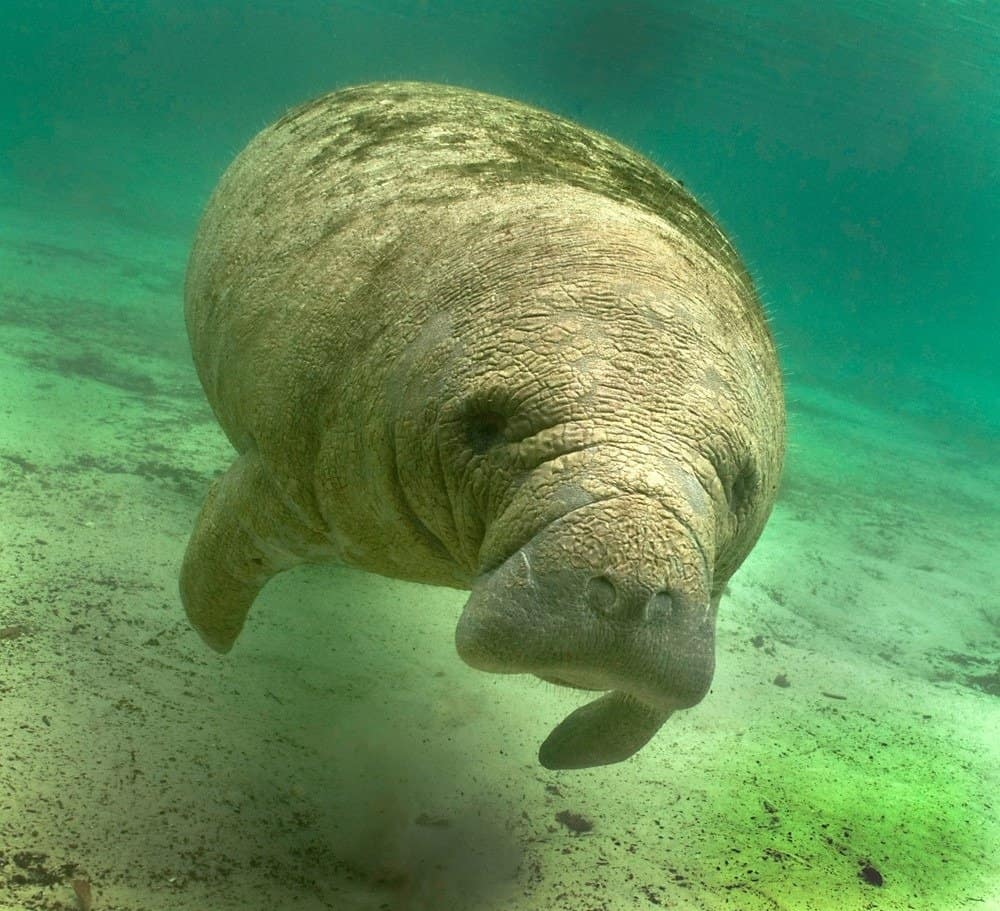
Manatees look for food at every level of the water and sometimes on the banks.
©gary powell/Shutterstock.com
Manatees eat many different plants while they’re swimming in coastal waters and rivers. They tend to feed at the top of the water, in the middle of the “water column”, and near the bottom.
When they are at the top of the water, they will surface, gather the food in their mouths, and chew it before moving on to graze on other plants.
Manatees also consume foods on the bottom of the body of water. In that case, they will truly earn their name sea cows, as they graze over the particular plants, using their flippers and lips to guide food to their mouths.
In some cases, manatees have been witnessed pulling themselves slightly out of the water to feed on vegetation along the waters’ banks.
The Amazonian manatee is a unique species when it comes to its eating habits. The manatees living in the deeper waters in the Amazon often fast for the last two months of the year since water levels drop and limit their access to their food supply.
This species is also capable of going far longer without food if the need arises.
Fasting isn’t necessarily harmful to these manatees as they are well-adapted to survive for long periods without eating much because of their low metabolic rate. During fasting times, manatees will reduce their activity level.
What Predators Do Manatees Face?
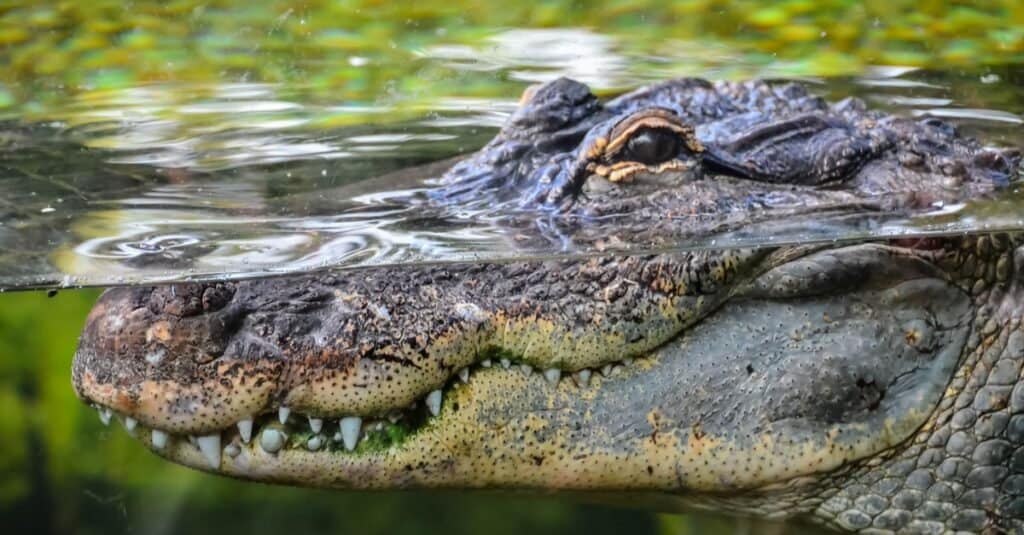
Crocodiles can catch and eat young manatees.
©underworld/Shutterstock.com
Surprisingly, manatees do not have many predators in the wild. Although crocodiles prey on the young, most adult manatees are capable of diving deep enough in the water to avoid them and other predators, like sharks.
Humans, although they don’t hunt manatees for food, are a significant danger to the population.
Human Impacts on Manatees’ Habitats
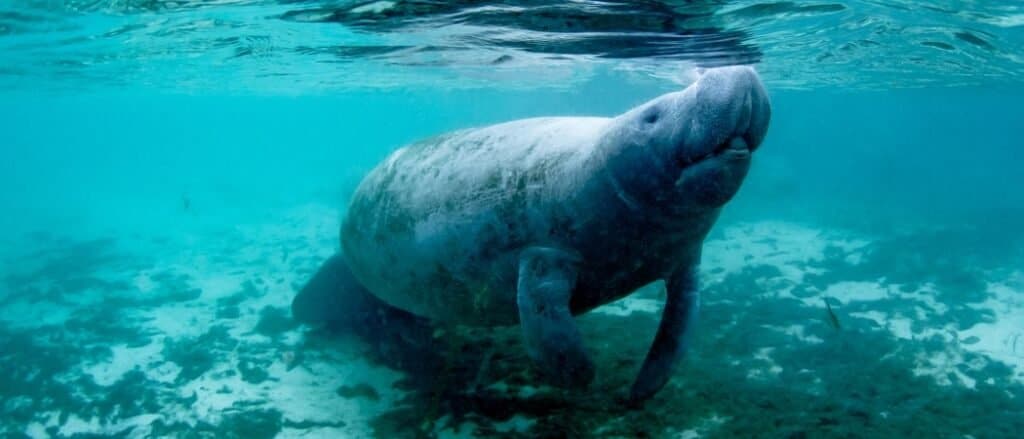
Manatees are frequently harmed by human beings.
©Eric Carlander/Shutterstock.com
Predators are not the only problem that manatees face. Humans have impacted manatee habitats in all the places they live, developing coastal lands and installing water control systems. Both actions tend to ruin food sources for the manatees or outright kill them.
Humans also harm these creatures in another way. These animals are not consistently fast swimmers, usually moving at between 3 and 5 miles per hour. However, they are capable of short-term speed bursts. Unfortunately, their speed is no match for boats.
Since manatees live in areas like Florida where privately-owned motorboats and shipping vessels zip through the waters, manatees are victims of boat strikes. Although some of them survive these interactions with boats, they don’t always learn to avoid boats because they are curious creatures. Also, they face infections in their boat strike wounds that can also be fatal.
The manatee is a loveable creature that eats a variety of plants in great volume. Each species has preferred foods that are native to their area, and they all face unique challenges. Unfortunately, manatees face several challenges in their lives.
Humans are destroying their food sources, damaging their ecosystems, and inadvertently killing them with their ships. As a result, all three species are considered endangered. Humans can help reverse course on this problem, but to some extent, the curious nature of manatees is such that they will continue to run up against human activities with negative results.
The photo featured at the top of this post is © Thierry Eidenweil/Shutterstock.com
Thank you for reading! Have some feedback for us? Contact the AZ Animals editorial team.



